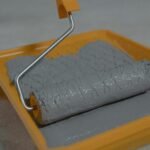What if your office ceiling could save you money while reducing noise? It may sound futuristic, but this is the reality of today’s commercial ceilings. Contemporary acoustic ceiling tiles are transforming commercial environments by offering more than just sound absorption. Instead, they play a new role in enhancing HVAC system performance.
Energy-efficient ceiling tiles can take advantage of savings on heating and cooling by decreasing plenums, reducing leakage, and even utilizing thermal technologies in the ceiling tiles. The combined benefits of energy efficiency and occupant comfort make these tiles an obvious choice for businesses aiming to reduce energy costs without disrupting productivity.
Why Acoustic Ceiling Tiles Matter to HVAC Performance
Plenum Control
The plenum above a ceiling tile is an invisible roadway for the air to distribute itself. If there are gaps or leaks, this means that the HVAC systems are working harder as they are wasting energy. High acoustic ceiling tiles efficiency reduce the uncontrolled airflow by tightening up the plenum spaces and allowing the fans (blowers) to work with less stress. This control reduces energy consumption while guaranteeing that the performance of the air flows is stable and even.
Thermal Balance
Suspended ceilings affect the way heat is absorbed or lost by a building. While exposed concrete slabs allow for thermal mass and refrigerative (nighttime) cooling, tiles provide a barrier. By reflecting or absorbing heat, well-designed energy-efficient ceiling tiles can take advantage of manageable thermal control capability. They will give you a more predictable temperature because HVAC cycles can be reduced, without sacrificing acoustics and occupant comfort.
Energy Outcomes
Good ceiling tiles have a direct effect on fan power, duct performance, and comfort across multiple zones. Reduced air leakage means that your HVAC systems use less energy to maintain a balanced temperature. Proper airflow distribution means a consistent comfort level without being too hot or too cold. By providing both efficiency and comfort, acoustic ceiling tiles allow for tangible cost savings in commercial buildings.
Sealed Ceiling Strategies — Gasketed Tiles and Plenum Airtightness
Gasketed Systems
Tiles that have gaskets along the edges provide an airtight seal between each panel and between the ceiling grid. This reduces bypass airspace and improves acoustic ceiling tiles efficiency. If the leakage of the plenum is reduced, it will require less work from the HVAC fan(s) to maintain the intended volume of airflow, ultimately reducing the energy consumption. This straightforward measure enhances the comfort of the occupants and saves money in its application in commercial buildings.
Installation Information
A good installation is essential for energy-efficient ceiling tiles to function properly. Careful installation of penetrations, hold-down clips, and alignment with the grid will limit gaps that may make air escape. Improper installation can waste energy, and the manager must try to achieve the energy-efficient potential indicated in the manufacturer’s specification. For example, as little as a small pinhole in a joint would cause the HVAC to be inefficient.
Commissioning Verification
To have measurable results, commissioning and TAB (Testing, Adjusting, Balancing) verification is required. Building Engineers can measure plenum pressures and airflow, thereby confirming that their targets were met in installing the efficiency of the acoustic ceiling tiles. This actually validates the quality of the installation in addition to guaranteeing that the energy-saving fixture is being achieved in real-world operation.
Performance Evidence
Controlled studies demonstrate that sealed ceiling strategies consistently reduce fan energy and HVAC workload. Lab and field tests yield clues on significantly reduced electricity consumption, and that energy-saving ceiling tiles represent not just a theoretical gain, but a physical, measurable reduction of commercial energy costs.
Phase-Change “Energy-Saving” Ceiling Tiles
Phase Change Material (PCM) Technology
Phase Change Material (PCM) ceiling tiles absorb and re-emit heat as temperatures rise and fall, allowing indoor conditions to stabilize, and making HVAC systems operate more efficiently. Energy-saving ceiling tiles allow buildings to maintain indoor comfort while limiting unnecessary heating and cooling cycles.
Performance Parameters
The effectiveness of PCM is dependent on the climate, building schedule, and controls. The reason for saving peak energy is using a PCM tile with a precise HVAC schedule and building management systems. Managing all of these aspects confirms that you will save energy with ceiling tiles, regardless of the commercial space you are in.
Cost Considerations
Owners should assess the initial cost compared to potential savings. Elevating PCM tiles had increased initial investment, but efficiencies of more effective acoustic ceiling tiles, along with reductions in HVAC from materials in PCM products, can provide significant ROI, especially in large or high-occupancy commercial spaces.
Thermal-Mass Trade-Offs in Design
Open suspended ceilings can undermine the effectiveness of passive measures like night cooling. By carefully considering the acoustic needs of the area alongside the potential of an exposed thermal mass, designers can maximize acoustic ceiling tiles efficiency. Hybrid solutions that use selective open ceiling designs, ceiling clouds, or partial coverage make it possible to use energy-saving ceiling tiles to create comfort while enhancing heating and cooling performance.
Compliance Standards
ASHRAE 90.1-2022 and 2024 addenda emphasize accuracy in energy modeling, and therefore, the airtightness of the plenum is even more critical for compliance. Setting the baseline in the Basis of Design to include an efficient acoustic ceiling tile will help provide assurance that the HVAC systems will function as intended. Commissioning of the systems and performing leakage tests will help confirm that the investment in energy-saving ceiling tile is validated in practice and will enhance operational efficiency over the life of the building.
Ceilings That Empower Comfort
With the proper design in sealed gasketed systems or current PCM materials, acoustic ceiling tiles efficiency improves HVAC performance and reduces energy consumption. Choosing energy-saving ceiling tiles creates quieter, more comfortable, and sustainable commercial spaces that provide long-term savings while supporting occupant health and organizational efficiency.






